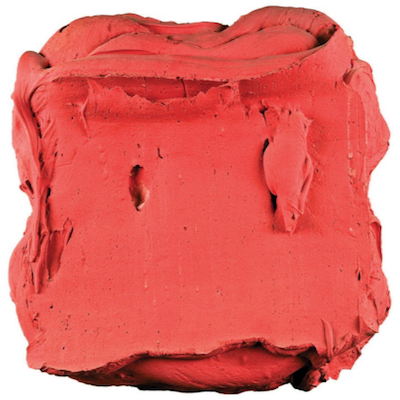
Details
Artist
Styles
Hand-painted, 17-color silkscreen with poured resin // Julian Schnabel's Roy (1998) is a dynamic, large-scale silkscreen print that combines bold colors and expressive brushstrokes. The artwork features a white silhouette of a bird, possibly a crane or heron, set against an energetic background of swirling reds, blues, and yellows. The 17-color silkscreen technique, coupled with hand-painting and poured resin, gives the piece a textured, almost sculptural quality. The contrast between the bold, vibrant background and the stark white figure highlights Schnabel's signature style of blending abstraction with recognizable forms. This limited edition print, created in an edition of 90 with 6 artist proofs, is an evocative exploration of movement and color.
Roy, 1998
form
Medium
Size
114.3 x 91.4 cm
- Inches
- Centimeters
Edition
Price
- USD
- EUR
- GBP
Details
Artist
Styles
Hand-painted, 17-color silkscreen with poured resin // Julian Schnabel's Roy (1998) is a dynamic, large-scale silkscreen print that combines bold colors and expressive brushstrokes. The artwork features a white silhouette of a bird, possibly a crane or heron, set against an energetic background of swirling reds, blues, and yellows. The 17-color silkscreen technique, coupled with hand-painting and poured resin, gives the piece a textured, almost sculptural quality. The contrast between the bold, vibrant background and the stark white figure highlights Schnabel's signature style of blending abstraction with recognizable forms. This limited edition print, created in an edition of 90 with 6 artist proofs, is an evocative exploration of movement and color.
- Recently Added
- Price (low-high )
- Price (high-low )
- Year (low-high )
- Year (high-low )
Julian Schnabel
Guiseppe (Brooding On The Vast Abyss), 1998
Limited Edition Print
Silkscreen
USD 4,800
Julian Schnabel
Bandini From View Of Dawn In The Tropics Series, 1998
Limited Edition Print
Silkscreen
USD 4,700
What is matter painting?
Matter painting is a technique that involves blending thick impasto paints with materials like cement, mud, sand, or shells. The term first emerged in the 1950s to describe the works of Belgian and Dutch painters who explored the physical properties of painting materials and the different ways paint could be manipulated. This approach emphasizes texture and the tactile qualities of the surface, creating a sculptural effect on the canvas.


















